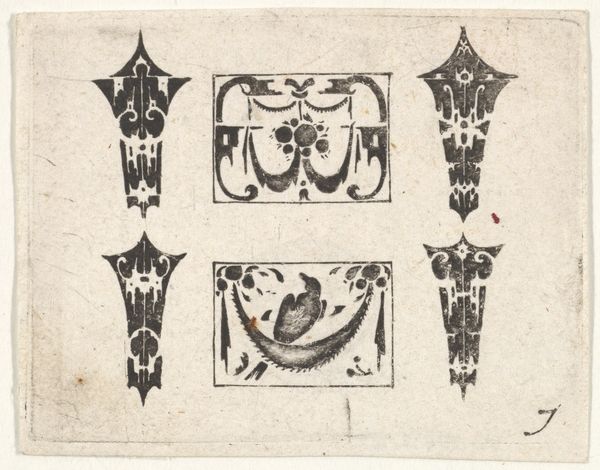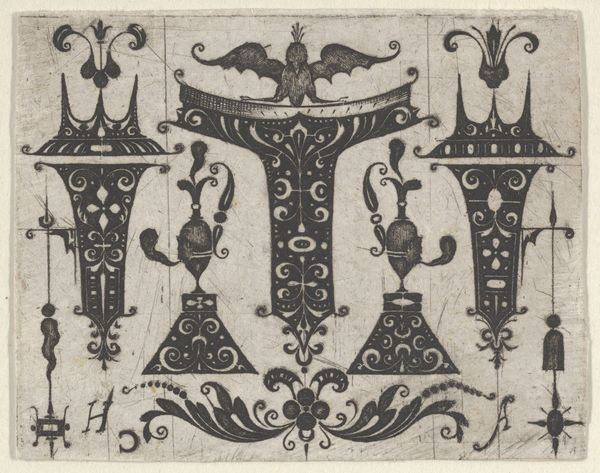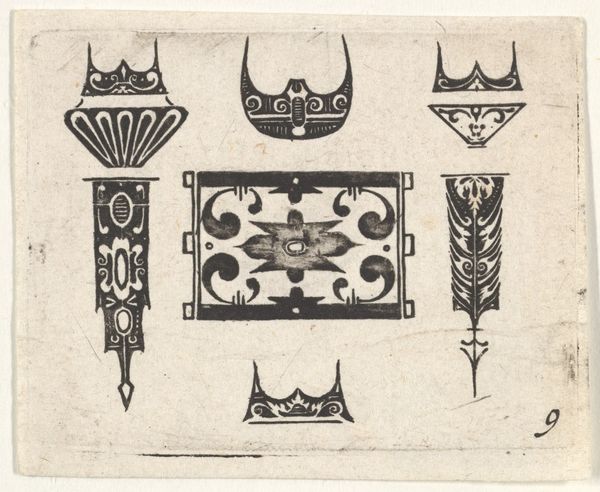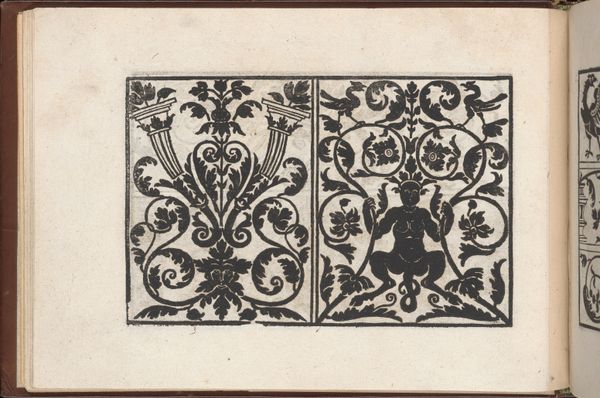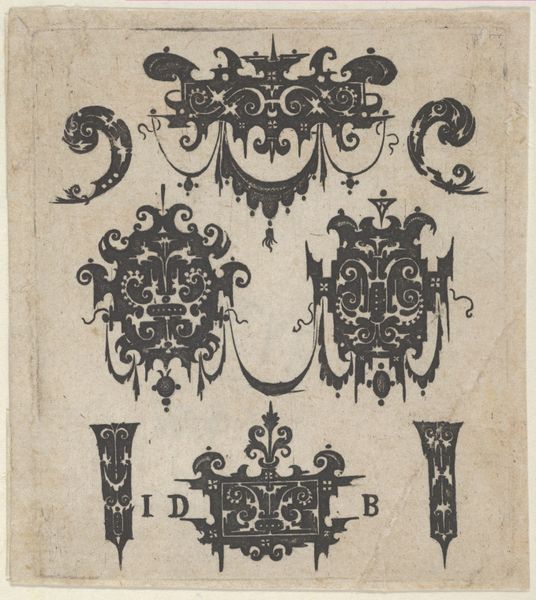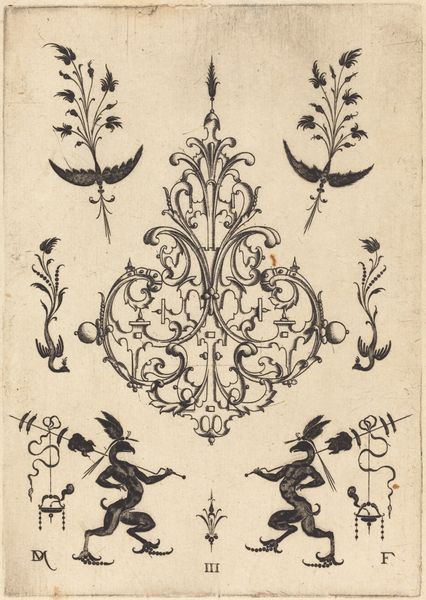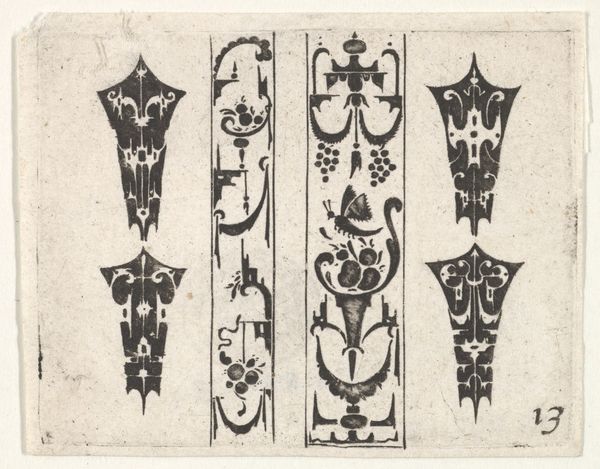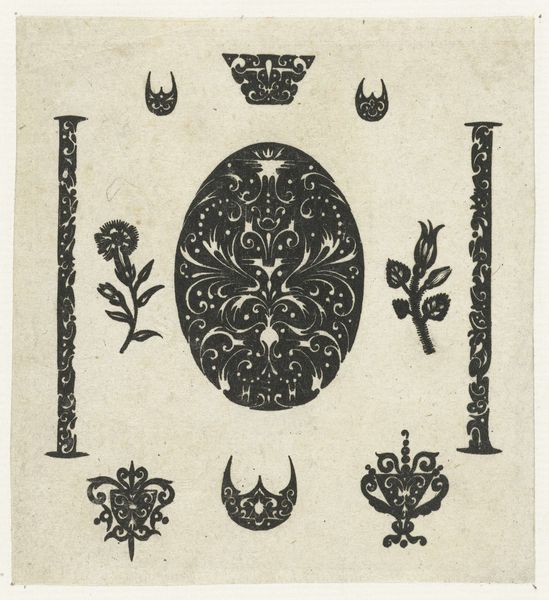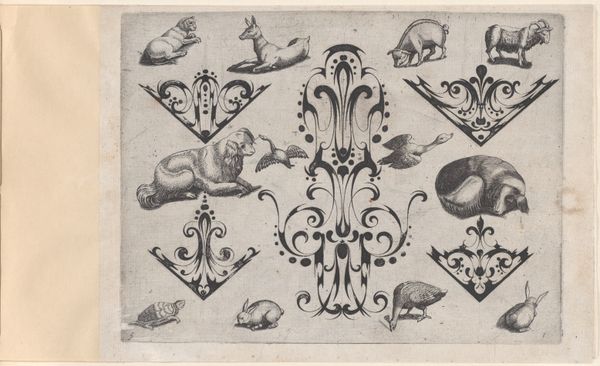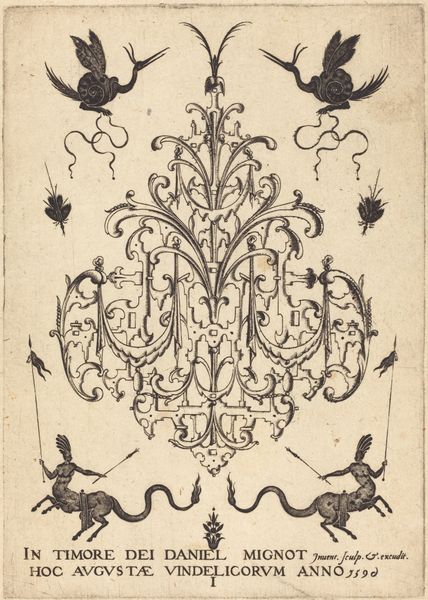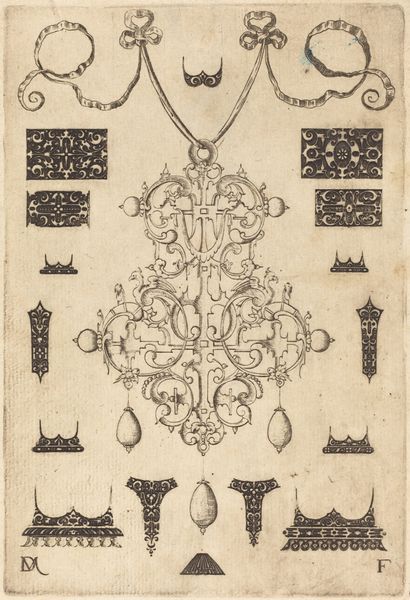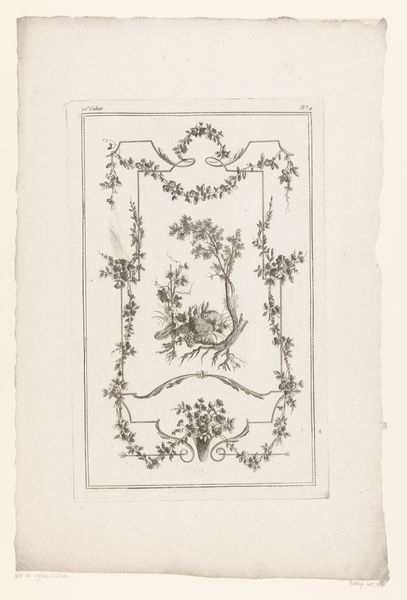
Blackwork Print with a Symmetrical Schweifwerk Pattern 1600 - 1620
0:00
0:00
drawing, print, woodcut, engraving
#
drawing
# print
#
bird
#
mannerism
#
geometric
#
woodcut
#
northern-renaissance
#
engraving
Dimensions: Plate: 1 9/16 x 2 in. (3.9 x 5.1 cm)
Copyright: Public Domain
Curator: The first impression is striking—a composition of such graphic intensity. The black ink against the off-white paper creates a very high contrast. Editor: Here we have an engraving by Claes Jansz. Visscher, dating from 1600 to 1620, entitled "Blackwork Print with a Symmetrical Schweifwerk Pattern." It's currently housed at the Metropolitan Museum of Art. It immediately strikes me as emblematic of its era, reflecting a world steeped in social and political upheaval. Curator: I see how this piece would speak to its time, it’s full of recurring motifs. The shapes are very geometric and decorative, what kind of political context do you see surfacing? Editor: This work speaks volumes about the fashion of the Northern Renaissance— the status and trade networks established when an elite desired objects which represented global connections, wealth and religious authority. I note in particular that blackwork, with its Iberian influences, came to England with Catherine of Aragon and instantly signaled power through fashion. This then trickled down through classes as pattern designs and woodcuts became available. Curator: That’s quite interesting and a lot to glean from an image made purely with black ink on paper. For me, there's a precision here in its execution. Note the intricate patterns in those almost symmetrical objects with their curvaceous and sharply pointed features. There’s a structural element with how all the geometric shapes interact, how each individual design in the rectangle has its own sense of symmetry within the frame. I love that, I wonder, could we dive into some potential symbology present? What story might that bird represent? Editor: Well, birds, particularly crows and ravens, in that era were often seen as ominous figures, or associated with pagan rituals and beliefs which were frowned upon. The bird surrounded by lush florals is quite symbolic, too—perhaps alluding to hidden freedoms among social constraint? I find that interesting and fitting for a print made in the midst of emerging European colonial efforts. Curator: Yes! Absolutely. Thanks to its graphic impact and cultural relevancy, it clearly reveals the complexities of its time. Editor: Agreed; the print offers valuable insights into the aesthetic values and shifting geopolitical climate.
Comments
No comments
Be the first to comment and join the conversation on the ultimate creative platform.

